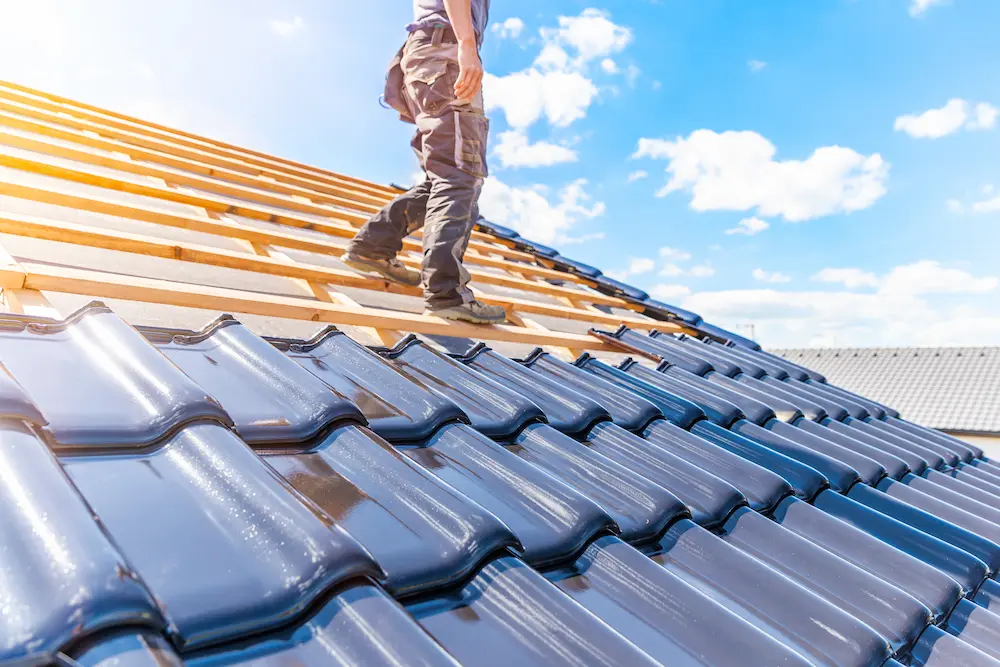It is essential to protect the inside of a structure from water leaks. Find out how to make a roof waterproofing.
why should you make a roof waterproofing
It is essential to protect the structure of a building and maintain a healthy and safe indoor environment. There are 3 main reasons to waterproof a roof:
- Protection against structural damage: If a roof is not properly waterproofed, water could seep in and cause damage to the building structure, such as wood rot and metal corrosion. This damage can be difficult to repair and can jeopardise the stability of the building.
- Avoid health problems: Water leaks can cause mold and fungal growth, which can have a negative impact on indoor air quality and lead to health problems, especially to people with allergies or asthma.
- Energy savings: A properly waterproofed roof can reduce the amount of energy needed to maintain a comfortable indoor temperature. If water penetrates the roof insulation, it can decrease its thermal insulation capacity and increase the energy consumption needed to heat or cool the building.
How to make a roof waterproofing:step by step
A roof is one of the most important parts of any structure, as it protects the inside of the structure from the outside elements. However, roofs can be affected by water leaks, which can cause significant and costly damage. Waterproofing a roof is a key process to prevent such leaks and ensure proper protection of the building. In this context, knowing the steps necessary to waterproof a roof, could be useful to any owner or professional involved in the construction or maintenance of structures.
the following detailed steps for roof waterproofing are:
Inspecting the roof
Perform a thorough inspection of the roof to detect any existing waterproofing problems and correct them before the beginning of the waterproofing process.
Cleaning and preparation
The roof surface must be properly cleaned and prepared before any waterproofing is applied. This may include the removal of any mould or moss, as well as the repair of any cracks or damage to the surface.
Material selection
There are different materials and options for waterproofing a roof, such as asphalt sheeting, polymer membranes, waterproofing paints, among others. Select the material that suits your needs and budget best.
Base coat application
Apply a base coat of waterproofing over the entire roof surface, following the specific instructions for the selected material.
Installation of the intermediate layer
In some cases, it is necessary to install a binder coat to improve the protection of the roof. If necessary, apply the intermediate layer according to the instructions of the selected material.
Installation of the topcoat
Apply the final coat of waterproofing over the entire roof surface, following the specific instructions of the selected material. Protecting edges and critical points It is important to protect roof edges and other critical points, such as chimneys or drains, to prevent water infiltration. Use specific materials to protect these points.
Final inspection
Once you have completed the waterproofing, perform a final inspection to ensure that the entire roof surface is properly protected.
It is important to follow the above steps carefully to ensure an effective roof waterproofing. If you have any doubts or difficulties, it is advisable to contract the construction services of a company specialising in roofing and roofing.
What materials and workers should you use for waterproofing
The choice of materials and staff needed to waterproof a roof will depend on the type of roof, the climatic conditions of the area and the available budget. From Leba Constructora we present some of the materials and personnel commonly used in the process of roof waterproofing:
Materials
Asphalt sheets
- Polymer membranes
- Waterproofing paints
- Silicone sealants
- Materials to protect edges and critical points (e.g. drains or chimneys)
- Specific tools and equipment for the application of materials
Specialists
- Professional waterproofers with experience in the application of the selected materials
- Cleaning personnel to prepare the roof surface
- Safety personnel for working at heights
- Supervisors or project managers to ensure the work is carried out properly and safely
Please do not hesitate to contact us if you need more details on how to waterproof a roof or about.
LEBA, Construction company on the Costa del Sol


